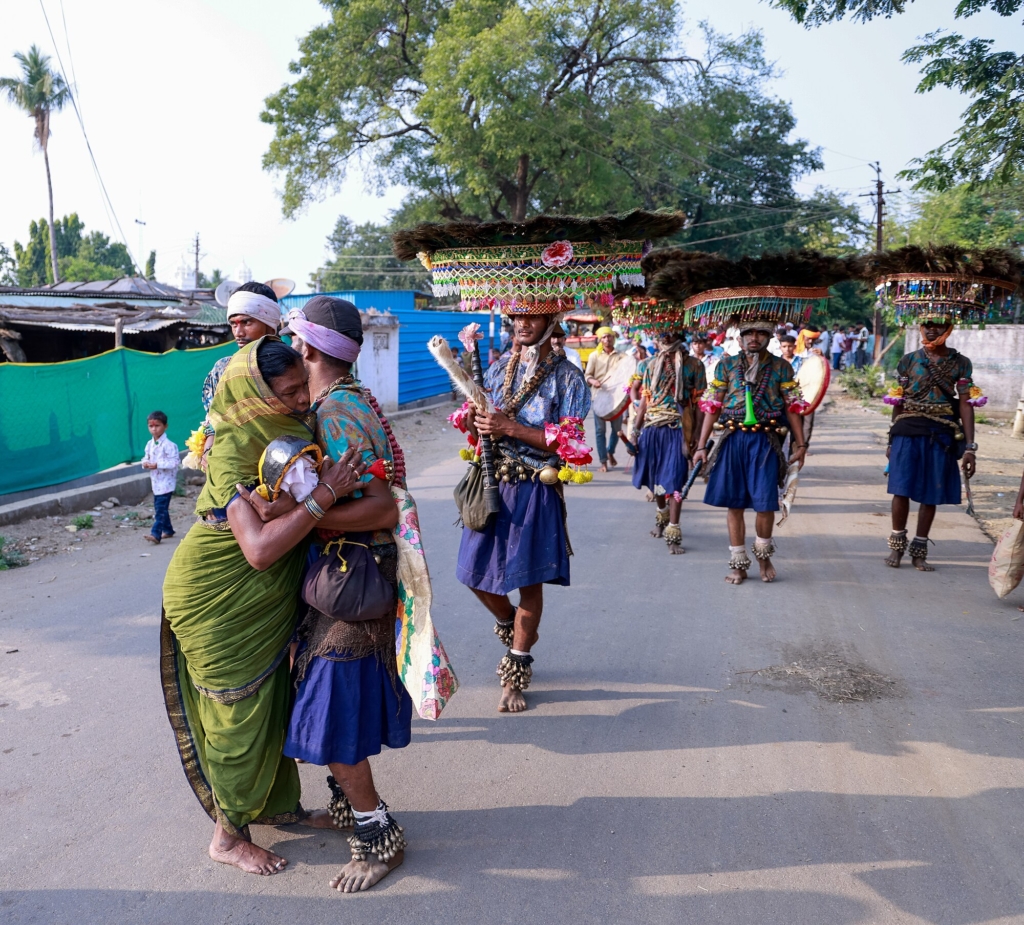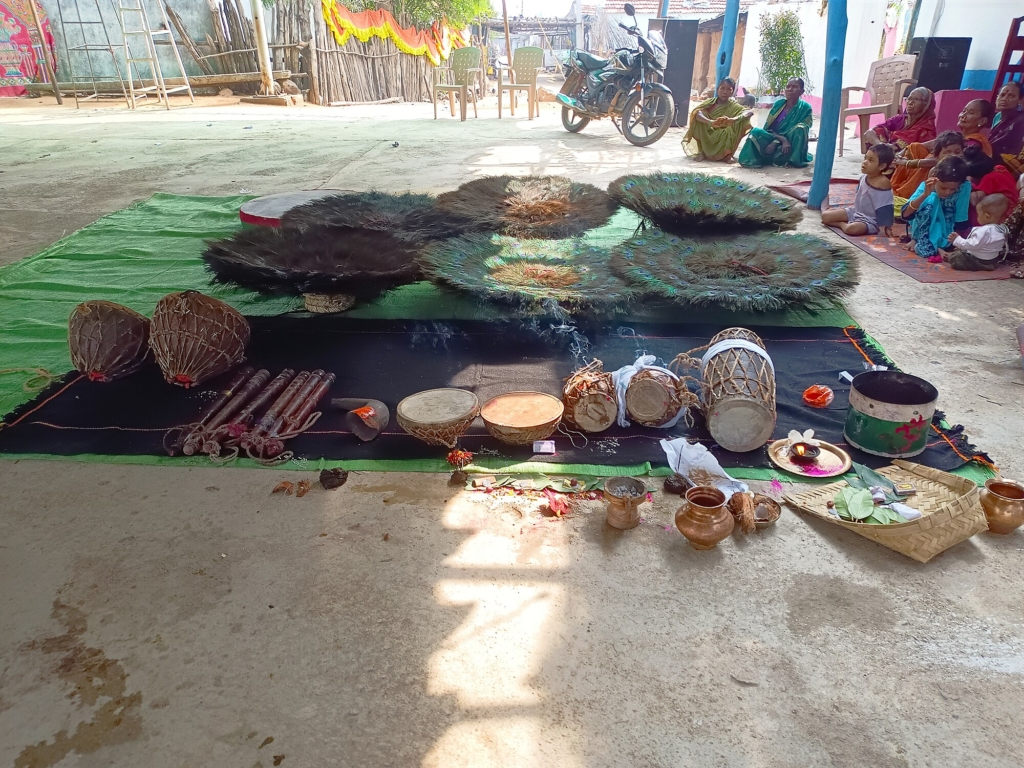Every year, around Diwali, the villages of Adilabad come alive with the sound of drums, flutes, and the rhythmic steps of the Gussadi dancers. Performed by the Raj Gond and Kolam communities, Gussadi is a traditional dance that celebrates the harvest season and honours ancestors.
The festival, known as Dandari-Gussadi, begins after the harvest and continues through Diwali, concluding with a ritual called Kolabodi.

During this period, troupes of dancers, called dandari, travel from village to village. They perform in courtyards, visit families, and maintain social and cultural connections among communities.

Before performing, dancers worship their deities, clean their instruments, and prepare their costumes. Their attire includes headgear made of peacock feathers, mirrors, and beads, sometimes combined with deer or goat skins, and their bodies are often smeared with ash or lime. Drums and wind instruments guide the group movements, which often include formations and steps inspired by animals such as peacocks and deer.
In recent years, the Telangana Department of Language and Culture has invited Gussadi and Kolam troupes to perform in cities such as Hyderabad. These performances provide an opportunity for urban audiences to witness and appreciate this traditional tribal art form.
Gussadi continues to be an important cultural practice for the communities of Adilabad, representing gratitude for the harvest, respect for ancestors, and the preservation of tribal heritage.




